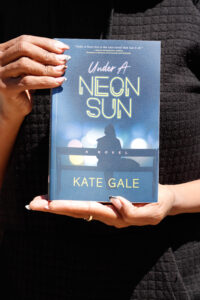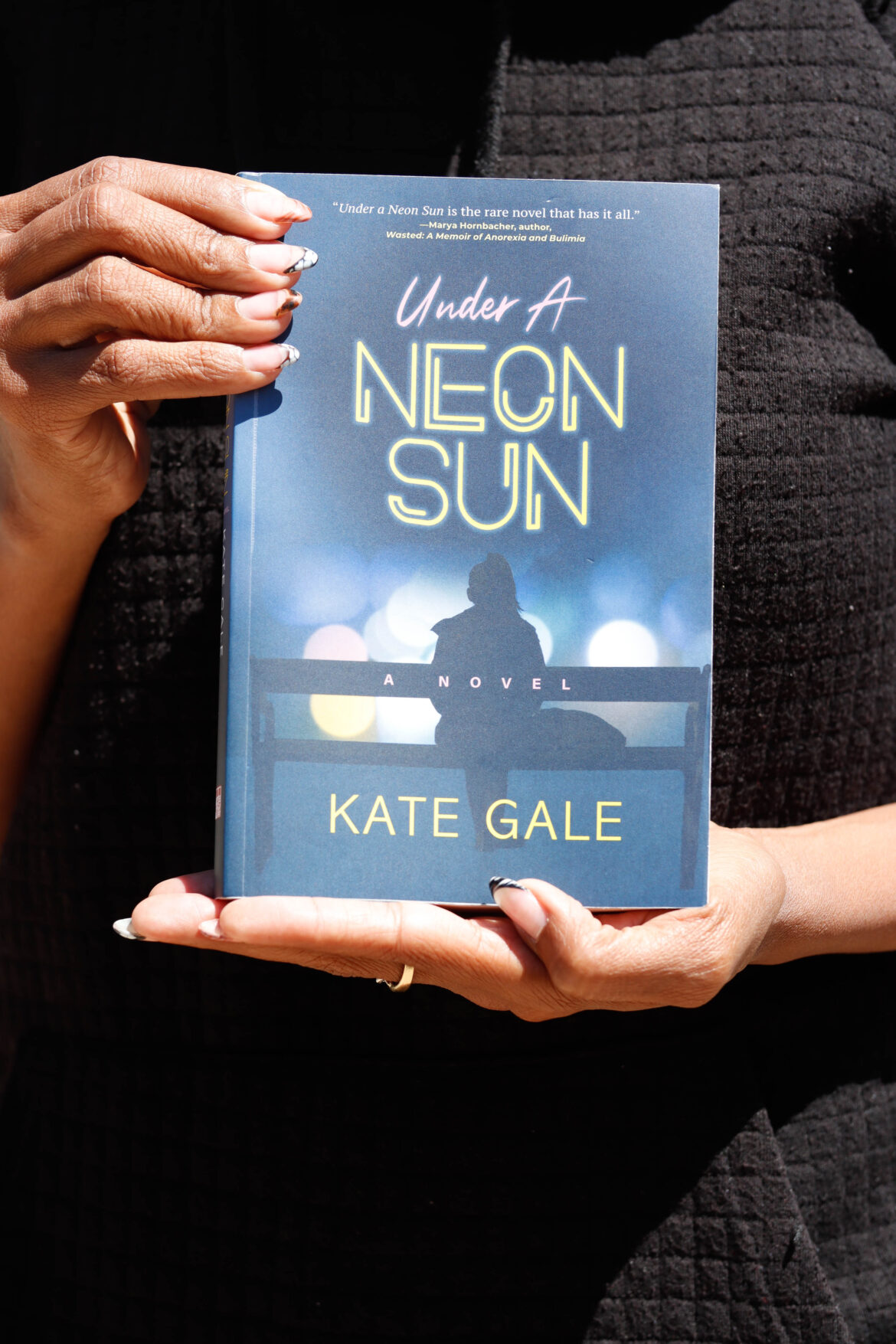This month, a new book, “Under a Neon Sun,” has been released in which the protagonist is not just a student at Pierce College, but is working several jobs—including childcare and housekeeping—while homeless, living in her car as she saves her income. The story is set at the beginning of the COVID-19 pandemic, further complicating her plans.
In the book, author Kate Gale creates scenarios for her character, Mia, to overcome. Formerly a professor at Pierce, Gale has written seven poetry books and contributed to six operas. This is the first novel she has published.
The character is inspired by her experiences living unhoused, although there are some differences.
“Mia herself, I hope, is a very likable character. She’s certainly a very hardworking and resilient character,” Gale said. “And I think she also has a lot more resilience than I did in my 20s. I think I was a lot more scared of life than she is. I think, in a way, she has a lot more of the energy and verve of my own kids, because I see millennial kids and Gen Z kids as having a lot of great energy and the ability to change the world.”

This interview has been edited for length and clarity.
Roundup News:
Why did you select Pierce College as the institution Mia goes to school at? Why a community college?
Kate Gale:
I started school at a community college, and I do think that the kids who are homeless, many of them do attend community college, partly because—I will say that for myself—I don’t think I would have started college at all if there weren’t community colleges.
I was homeless at first, and then barely holding on. And so when someone suggested to me to go to college, the only college that was even imaginable to me to start at was a community college, because I didn’t have anybody helping me out with anything.
When you’re living on the edge, like, you have gone to the grocery store and bought cans for ten cents and opened them up to see what was in them, which is definitely what I was doing, you know, at 18, the idea of going to, like, a real school is just kind of out of the question, whereas a community college feels like, ‘I don’t know, maybe they’ll take me. Let’s see what happens.’
Mia is very much living on the edge. And so no way she would have imagined just jumping into UCLA or something, or even a Cal State. Whereas community college feels like the kind of college that if you’re smart and you want to change the world and you want to change yourself, but you’re living your life on the edge, that a community college would recognize that kind of edgy brilliance and help you get to that next stage of your life.
At least, that’s kind of how I saw myself, and that’s kind of how I see Mia.
RN:
What is the meaning behind the title of your book?
KG:
I think a lot about the idea of the California dream versus the American dream. And the American dream, of course, is that you have a house with a car and two kids and a dog and a tree. And the California dream is you have a very big house, and your house is under a neon sun and palm trees, and it has a very beautiful wife who looks like a young Pamela Anderson. And, you know, you have a fancy dog and your house is by the beach. And so I think of that whole California dream as being sort of a neon dayglo version of the American dream. I liked that whole idea of “Under the Neon Sun.”
RN:
Did you visit the campus or speak to students at Pierce?
KG:
I taught at Pierce College, and so I had great memories of the students there. But also, when I was teaching there, I met a lot of students who were living in very scary circumstances. Some of them were all packed in apartments. I did meet some students who were sleeping in their cars.
So while I was writing this, I wrote this whole thing during the pandemic. Obviously, I didn’t have the liberty to come and visit campus because everybody was off campus by the time I was writing this. But I had taught there, so I felt like I kind of had to remember back to the students I had known when I was teaching at Pierce.
I really loved teaching at Pierce during the time I taught there. I felt like students there were really energetic and—most of the students that I had—my classes were all bound for four-year universities, so I felt like they were really smart, really energetic and, as I said, had big plans to transfer.
RN:
So the story takes place in 2020. Now that four years have passed, can you reflect on how things have changed for college students, particularly those in community college, and who are homeless.
KG:
The homelessness has not really gotten better. I know that.
The new mayor, Karen Bass, has really been working on the downtown situation. But one of the things that I talked about in the op-ed article is that only one community college—and that is Long Beach—has safe parking for community college students who are living in their cars.
There are 119 community colleges in California, and I think that all 119 of them should have a safe, well-lit parking lot that is for students sleeping in their cars. That would be a big step toward acknowledging that there are homeless community college students and that those students should have a safe place to park, ideally on campus, so that somebody knows where they’re parking and somebody can make sure that they’re safe.
Obviously, a next step would then be toward working on housing community college students. But as far as I know, only one community college student has that kind of parking situation. So I feel like not enough has been done in those four years.
The other thing I talk about in this book is that it’s a particular struggle for LGBTQ+ youth, and I think that struggle has continued. So now I’d love to say that I think things have improved, but I think that it continues to be a struggle in California. I think we’re under-resourced as a state for certain kinds of things, and this is one of them.


